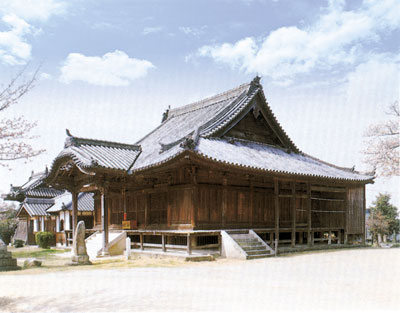本文
Main hall (hondō) of Yokeiji temple Houses two commemorative inscriptions (munafuda) and a miniature shrine (zushi)
Main hall (hondō) of Yokeiji temple
Houses two commemorative inscriptions (munafuda) and a miniature shrine (zushi)

Nationally Designated Important Cultural Property (designated 1979)
Made: Rebuilt in Shōtoku 4 (1714)
Location: Yokeiji temple, Kitashima, Oku
Dimensions: Length: about 11.8m Width: about 11.2m
Yokeiji temple (also known locally as Uetera) is an old temple which, located on the top of Mt. Uetera, overlooks the Yoshii river.
According to the munafuda, it appears that the main hall of Yokeiji temple was constructed originally in 1570 and then rebuilt in 1714. Later, in the 19th century, a roof was erected over the front steps and an annex added to the back.
The hondō of Yokeiji temple is said to have preserved many of the traditional characteristics seen in esoteric Buddhist temples of Japan’s medieval period. For example, this hall is square with five inter-pillar spaces, or bays, on the front side. This style, known as a ‘goken dō ’ (lit. 5 bay hall), can be seen usually only in the main halls of large temples. From its layout, it is thought that this hall once had an open area for prayers at the front, and a space at the back, partitioned off by walls and wooden shutters, to house the temple’s principal idol.
Inside the hall, there is a miniature shrine (zushi) for the main statue of Senju Kannon (the Thousand-Armed Bodhisattva of Compassion). This building is palace-like, with a gabled roof created in the Momoyama period (late 16 th c. CE) style.





